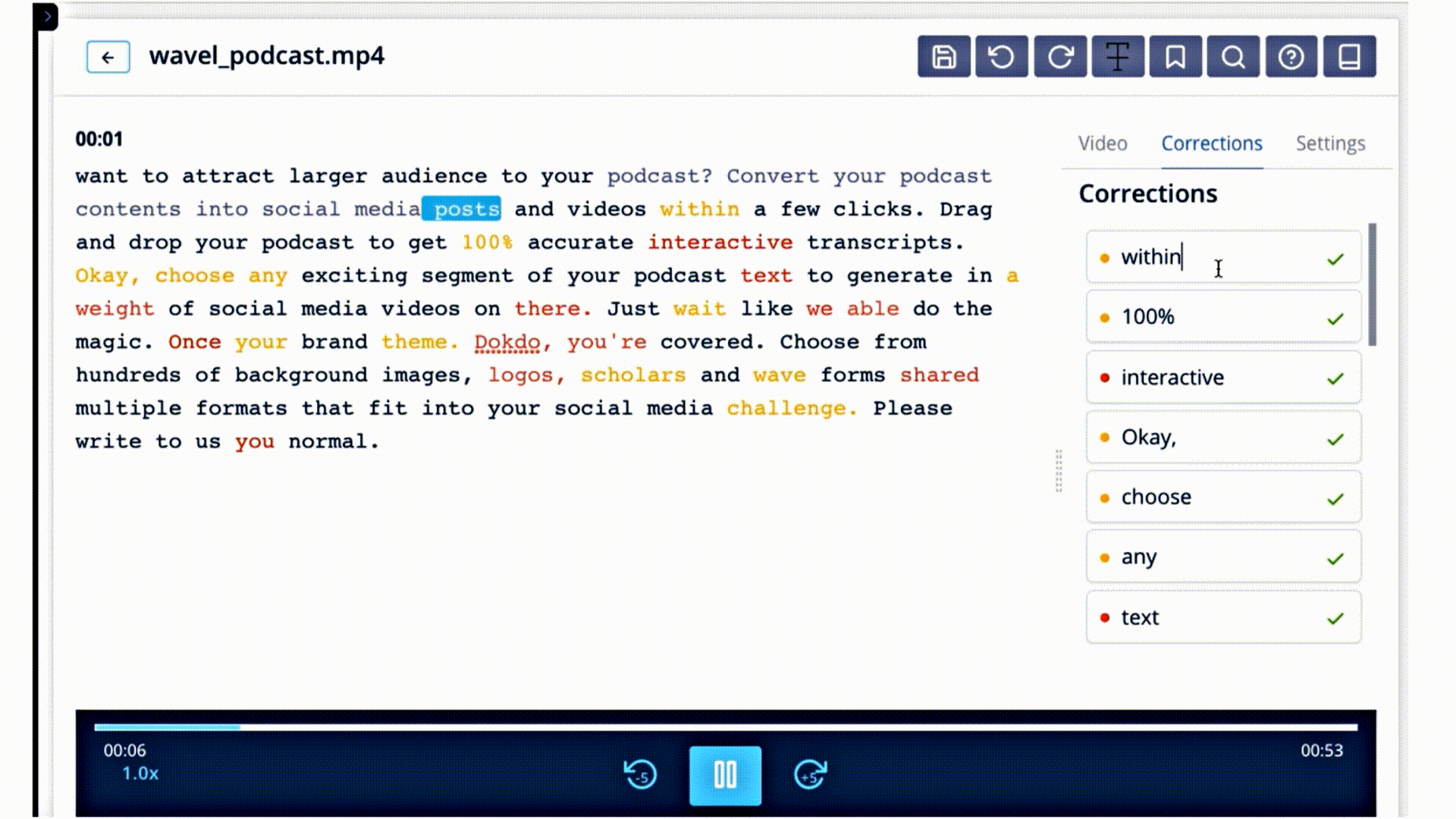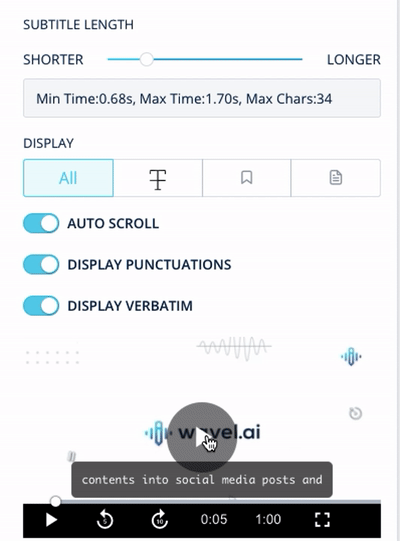As a viewer or a video marketer, have you ever wondered whether or not you need whatever features interactive transcripts offer? You have? But you are still undecided?
Let’s help you decide!
Consider this! You watched a video on YouTube that was discussing how to edit videos using Adobe Premiere Pro. But that was a couple of hours ago, and now you want to go back and re-watch a particular part of that video that talked about animating individual graphics.
Only problem? The timestamps provided by the video’s author are not thorough enough to cover sub-topics. Now what? Good ole slider dragging? Not if you have interactive transcripts!
With the emergence of interactive transcripts, it is possible to search for a query. Then you can navigate to the exact point in the video where your search query appears. Problem solved!
Want to learn more? Here are five reasons why interactive transcripts are the future:
Timestamping Each Word
An interactive transcript, just like a regular one, is displayed beside the source material (be it audio or video).
Before interactive transcripts, you had to scroll and find your place in the source. But with interactive transcripts, a word or phrase is highlighted (or underlined) when it appears in the source material.

As a result, the source material gets your undivided attention as you are less distracted. Thus, this simple yet most useful feature helps in making the source material more engaging.
But how is this achieved? By adding a timestamp to each word!
With every word timestamped, the interactive transcript knows which word or phrase appears at what point in the source material. When that point is playing in the source, the transcript highlights the matching word or phrase.
Text-Based Control
However, timestamping each word serves more purposes than the one described in the previous section. For instance, suppose you click on a word or phrase in the interactive transcript. Instantly, the source material will start playing from the timestamp of that word or phrase.
This use case demonstrates that interactive transcripts give you text-based control over their source material. However, this feature does not sound as grand as dynamic highlighting unless you stack it against what you have to do at present.
As mentioned at the beginning of this article, when you are consuming content on YouTube, you have to rely on the uploader or one of the comments to provide static timestamps. These timestamps may or may not help you navigate to your desired point in that video.
With text-based control, you no longer have to rely on static timestamps. You can play any segment of the source material by clicking on the word or phrase that corresponds with it. Ultimately, this feature helps you engage with the source material effectively.
Searchable Content
Time to discuss the one feature we briefly brushed upon in the introduction: searchable content!
Just like in a regular transcript, you can search for a particular query in an interactive transcript. But when you combine this with the text-based control feature, you gain the ability to save a significant portion of your time instead of spending it sifting through the entire course material searching for a few minutes of content.
Let us see how with another use case.
You have a month old video recording of a brainstorming session with most of your team in attendance. It was to assess the insights obtained through recent market research your firm conducted. And to come up with ways to incorporate these insights in the new product line.
The problem? Too many voices, too many opinions, not many listeners. Now it is on you to filter out the noise and report the best ideas to your superiors. You have short-listed a few keywords that you think would bring out the most useful insights to the fore.
Fortunately, the recording came with an interactive transcript, which simplifies the process for you.
You would search every one of your keywords one by one inside the interactive transcript. Then you would sift through the many occurrences of your search term until you land upon the one you wanted. You click on that occurrence of your search query, and the video will start playing the segment containing your search query!
You jot down anything noteworthy. Then rinse and repeat.
Aside from saving much of your time, this feature will also help you avoid the menial task of combing through a long video for a 2-minute segment.
Adjustable Captions
Because of the modern web, we have gotten used to content that resizes according to our devices. Generally, we spend more time on websites that we can access on any device. As such, we expect all of the content that we come across to emulate this behavior.
Interactive transcripts deliver on this habit of ours in the form of adjustable captions. With adjustable captions, an interactive transcript resizes itself based on your screen width. Not only that, interactive transcripts give you the freedom of adjusting the captions on your own as well.

No need to rely on one specific device when you are consuming content! You can start watching a particular video on your laptop, take a break, and then finish watching on your smartphone.
With adjustable captions, interactive transcripts offer better readability and more convenience. This feature, ultimately, contributes towards more engagement with the content.
Increased Engagement
Not a feature, but an indirect benefit of interactive transcripts is increased engagement with the source material.
It has been well-documented that we are better readers than we are listeners. As such, when it comes to learning new concepts or making sense of complex problems, the features that interactive transcripts offer stand a better chance of driving you to engage with the source material more than you would otherwise.
Whether it is real-time interaction that dynamic highlighting makes possible or the ease that text-based control provides, your engagement level will always be higher with the source material if it has interactive transcripts.
Conclusion
There is little incentive for generating rich audio/video content if it is left under-utilized. Similarly, you as a consumer would find less value in consuming such content if it is not interactive or engaging enough.
With interactive transcripts, you make sure that the content you are generating is complete on its own. Instead of relying on your viewers to make sense of the content, you take the initiative of breaking it down for them.
Similarly, interactive transcripts enhance your experience as a consumer of such audio/video content. With the features listed in this article and the ones you will discover on your own, interactive transcripts will enhance your experience as a consumer.
Speaking of additional features, Wavel offers a hassle-free solution to generate interactive transcripts for your audio/video recordings. Aside from all the features listed in this article, Wavel also offers multiple speaker identification.
Interactive transcripts add value to your content for you as well as your target audience. There is no doubt that interactive transcripts will integrate themselves into our lives as audio/video content creators and consumers in the years to come.
That is more than enough reason to add interactive transcripts to your workflow as content creators and video marketers.
If you would like to reach out to us, you can do so by mailing us at reachout@wavel.co.
.webp)










